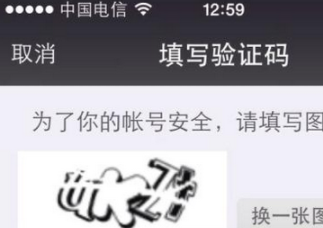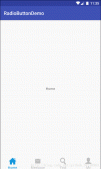关于安卓边下边播功能,供大家参考,具体内容如下
对于视频/音频软件,音乐软件,视频软件,都有缓存这个功能,那如何实现边下边播功能:
- 如何实现这个边下边播功能?
- 文件是否支持同时读写?(Mediaplayer 播放文件,从网络上下载文件)
- 播放与下载进度如何协调?
- 已缓存的文件需及时清理
经过一番折腾,我 find 了 : [ AndroidVideoCache ],这个库是 danikula 大神写,看完源码后收益匪浅。实现流媒体边下边播原理利用socket 开启一个本机的代理服务器
结合自身需求,修改了该库,使用okhttp进行网络请求:
AndroidVideoCache (改成 okhttp 缓存)
|
1
2
3
4
5
6
7
8
9
10
11
12
13
14
15
16
17
18
19
20
21
22
23
24
25
26
27
28
29
30
31
32
33
34
35
36
37
38
39
40
41
42
43
44
45
46
47
48
49
50
51
52
53
54
55
56
57
58
59
60
61
62
63
64
65
66
67
68
69
70
71
72
73
74
75
76
77
78
79
80
81
82
83
84
85
86
87
88
89
90
91
92
93
94
95
96
97
98
99
100
101
102
103
104
105
106
107
108
109
110
111
112
113
114
115
116
117
118
119
120
121
122
123
124
125
126
127
128
129
130
131
132
133
134
135
136
137
138
139
140
141
142
143
144
145
146
147
148
149
150
151
152
153
154
155
156
157
158
159
160
161
162
163
164
165
166
167
168
169
170
171
172
173
174
175
176
177
178
179
180
181
182
183
184
185
186
187
188
|
package com.danikula.videocache;import android.text.TextUtils;import java.io.BufferedInputStream;import java.io.IOException;import java.io.InputStream;import java.io.InterruptedIOException;import java.util.Map;import java.util.concurrent.TimeUnit;import com.danikula.videocache.file.MyLog;import okhttp3.Call;import okhttp3.OkHttpClient;import okhttp3.Request;import okhttp3.Response;import static com.danikula.videocache.ProxyCacheUtils.DEFAULT_BUFFER_SIZE;import static com.danikula.videocache.ProxyCacheUtils.LOG_TAG;import static java.net.HttpURLConnection.HTTP_OK;import static java.net.HttpURLConnection.HTTP_PARTIAL;/** * {@link Source} that uses http resource as source for {@link ProxyCache}. * * @author Alexey Danilov (danikula@gmail.com). * * 从URL 获取数据 */public class HttpUrlSource implements Source { private static final int MAX_REDIRECTS = 5; public final String url; private static OkHttpClient okHttpClient = new OkHttpClient(); private Call requestCall = null; private InputStream inputStream; private volatile int length = Integer.MIN_VALUE; private volatile String mime; private Map<String, String> headers; public HttpUrlSource(String url) { this(url, ProxyCacheUtils.getSupposablyMime(url)); } public HttpUrlSource(String url, Map<String, String> headers) { this(url, ProxyCacheUtils.getSupposablyMime(url)); this.headers = headers; } public HttpUrlSource(String url, String mime) { this.url = Preconditions.checkNotNull(url); this.mime = mime; } public HttpUrlSource(HttpUrlSource source) { this.url = source.url; this.mime = source.mime; this.length = source.length; } @Override public synchronized int length() throws ProxyCacheException { if (length == Integer.MIN_VALUE) { fetchContentInfo(); } return length; } @Override public void open(int offset) throws ProxyCacheException { try { Response response = openConnection(offset, -1); mime = response.header("Content-Type"); inputStream = new BufferedInputStream(response.body().byteStream(), DEFAULT_BUFFER_SIZE); length = readSourceAvailableBytes(response, offset, response.code()); } catch (IOException e) { throw new ProxyCacheException("Error opening okHttpClient for " + url + " with offset " + offset, e); } } private int readSourceAvailableBytes(Response response, int offset, int responseCode) throws IOException { int contentLength = Integer.valueOf(response.header("Content-Length", "-1")); return responseCode == HTTP_OK ? contentLength : responseCode == HTTP_PARTIAL ? contentLength + offset : length; } @Override public void close() throws ProxyCacheException { if (okHttpClient != null && inputStream != null && requestCall != null) { try { inputStream.close(); requestCall.cancel(); } catch (IOException e) { e.printStackTrace(); } } } @Override public int read(byte[] buffer) throws ProxyCacheException { if (inputStream == null) { throw new ProxyCacheException("Error reading data from " + url + ": okHttpClient is absent!"); } try { return inputStream.read(buffer, 0, buffer.length); } catch (InterruptedIOException e) { throw new InterruptedProxyCacheException("Reading source " + url + " is interrupted", e); } catch (IOException e) { throw new ProxyCacheException("Error reading data from " + url, e); } } private void fetchContentInfo() throws ProxyCacheException { MyLog.d(LOG_TAG, "Read content info from " + url); Response response = null; InputStream inputStream = null; try { response = openConnection(0, 20000); length = Integer.valueOf(response.header("Content-Length", "-1")); mime = response.header("Content-Type"); inputStream = response.body().byteStream(); MyLog.i(LOG_TAG, "Content info for `" + url + "`: mime: " + mime + ", content-length: " + length); } catch (IOException e) { MyLog.e(LOG_TAG, "Error fetching info from " + url, e); } finally { ProxyCacheUtils.close(inputStream); if (response != null) { requestCall.cancel(); } } } private Response openConnection(int offset, int timeout) throws IOException, ProxyCacheException { boolean redirected; int redirectCount = 0; String url = this.url; Request request = null; //do { MyLog.d(LOG_TAG, "Open okHttpClient " + (offset > 0 ? " with offset " + offset : "") + " to " + url);// okHttpClient = (HttpURLConnection) new URL(url).openConnection(); Request.Builder builder = new Request.Builder(); builder.url(url); //flac if(headers != null) { //设置请求头 for (Map.Entry<String, String> entry : headers.entrySet()) { MyLog.i(LOG_TAG, "请求头信息 key:" + entry.getKey() +" Value" + entry.getValue());// okHttpClient.setRequestProperty(entry.getKey(), entry.getValue()); builder.addHeader(entry.getKey(), entry.getValue()); } } if (offset > 0) { builder.addHeader("Range", "bytes=" + offset + "-"); } request = builder.build(); requestCall = okHttpClient.newCall(request); /*if (redirected) { url = okHttpClient.getHeaderField("Location"); redirectCount++; okHttpClient.disconnect(); } if (redirectCount > MAX_REDIRECTS) { throw new ProxyCacheException("Too many redirects: " + redirectCount); }*/ //} while (redirected); return requestCall.execute(); } public synchronized String getMime() throws ProxyCacheException { if (TextUtils.isEmpty(mime)) { fetchContentInfo(); } return mime; } public String getUrl() { return url; } @Override public String toString() { return "HttpUrlSource{url='" + url + "}"; }} |
下载地址:Android视频音频缓存框架AndroidVideoCache
以上就是本文的全部内容,希望对大家的学习有所帮助,也希望大家多多支持服务器之家。
原文链接:https://blog.csdn.net/CSDNno/article/details/52050414
















